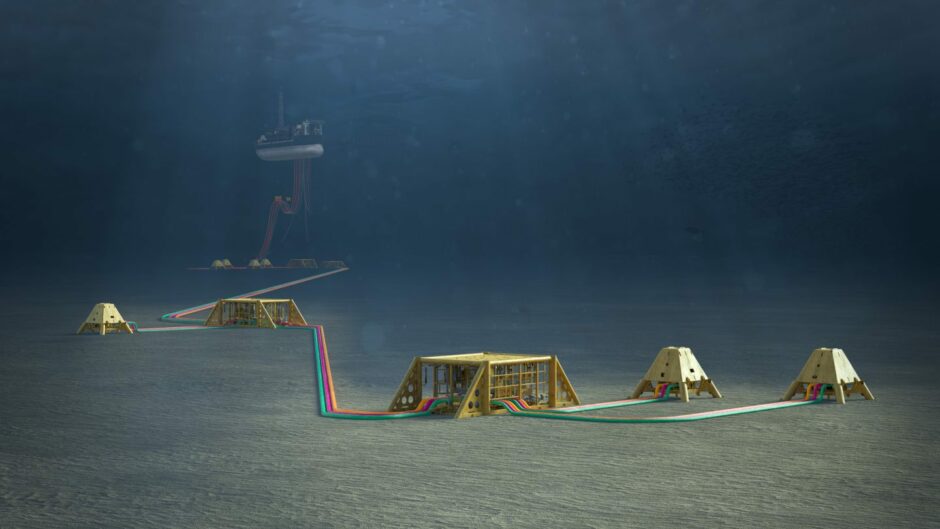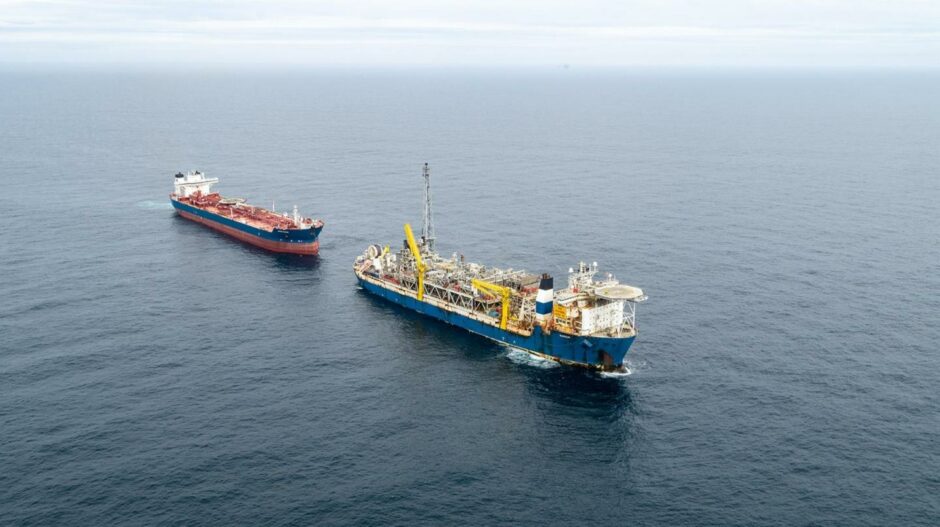
Aker BP has submitted plans for its Trell and Trine development with Norwegian regulators, with a view to boosting reserves at the wider Alvheim area above 750 million barrels.
Alongside licence partners Petoro and LOTOS Exploration & Production, the Norwegian operator submitted a plan for development and operation (PDO) to the Ministry of Petroleum and Energy (MPE) on Wednesday.
The Trell (licence 102 F/G) and Trine (licence 036E/F) discoveries lie some 15 miles east of the Alvheim floating production storage and offload vessel (FPSO) in the central North Sea, close to the UK border.
The PDO foresees three wells and two new subsea installations which will be tied back to existing infrastructure on East Kameleon, and further on to the Alvheim FPSO.
One of these wells is Trell Nord, which although not yet proven, has a “high likelihood of discovery”, Aker BP said. It plans to first prove hydrocarbons in Trell Nord, before drilling wells in Trell and Trine.
The programme will conclude with a production well at Trell Nord, if successful.
Recoverable resources at Trell and Trine are estimated at around 25 million barrels of oil equivalent (boe).
Total investment in the project is estimated at approximately NOK 6 billion ($700 million), with production scheduled to start in the first quarter of 2025.
The submission is the third PDO for the Alvheim area this year, following close behind Frosk and Kobra East & Gekko (KEG).
Aker BP CEO Karl Johnny Hersvik said the plan was “yet another confirmation of a success story on Alvheim that we and our partners can be proud of.”
“From an operational perspective, the Alvheim area is one of the most cost-effective on the Norwegian shelf, and the resource base has expanded dramatically since the field came on stream. This is the result of targeted exploration and business development, technological innovation and, not least, the level of cooperation with the suppliers,” he added.
The emissions intensity of the new development is expected to be “very low”, the company added, estimated at 0.3kg CO2 per barrel.
The Alvheim field consists of the Kneler, Boa, Kameleon and East Kameleon structures, which were later joined by the Viper-Kobra structures and the Gekko discovery.
The wider Alvheim area includes satellite fields Bøyla, Vilje, Volund and Skogul, all of which produce via the Alvheim FPSO, which came on stream on 8 June 2008.
At the time of its approval, recoverable resources at Alvheim were estimated at just under 200 million barrels. Since then, close to 550 million barrels have been produced from the area. Aker BP says its ambition is to develop and produce 1 billion barrels by 2040.
“The Alvheim area development is the story of an organisation and partnership that have consistently sought out new opportunities in the surrounding area. They have tested and embraced new technology, always with relentless focus on safe, stable and cost-effective operations,” added the company’s VP operations and asset development for Alvheim, Thomas Hoff-Hansen.
“When Trell and Trine are approved, the Alvheim area will surpass 750 million barrels either produced or sanctioned for development. Along with our partners, we see good opportunities for both connecting more discoveries to the established infrastructure in the area, as well as working to mature new exploration prospects,” he continued.
 © Supplied by Aker BP
© Supplied by Aker BP